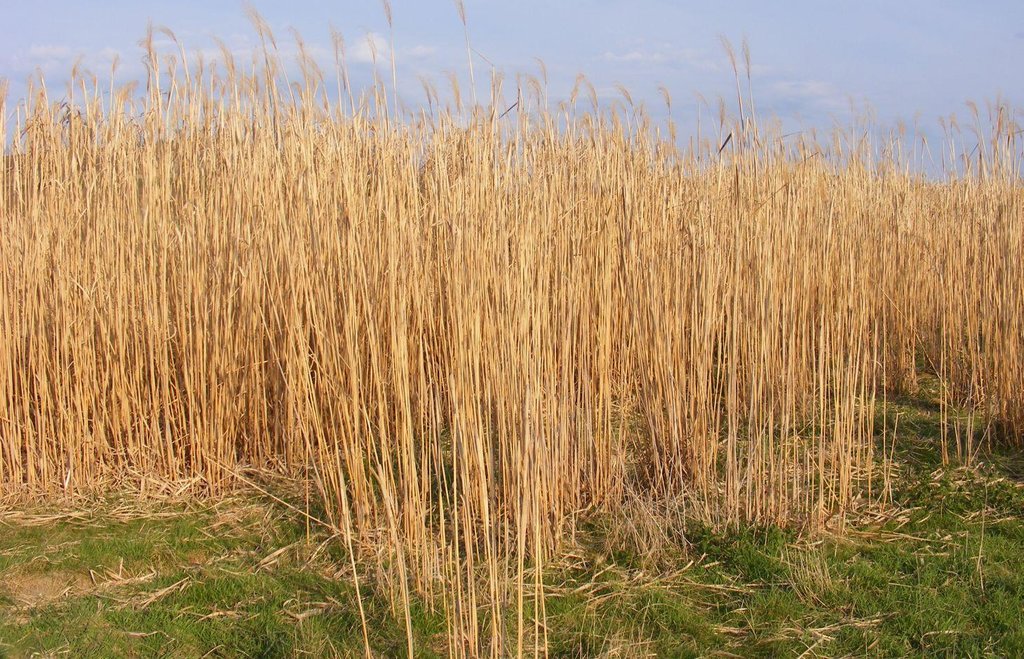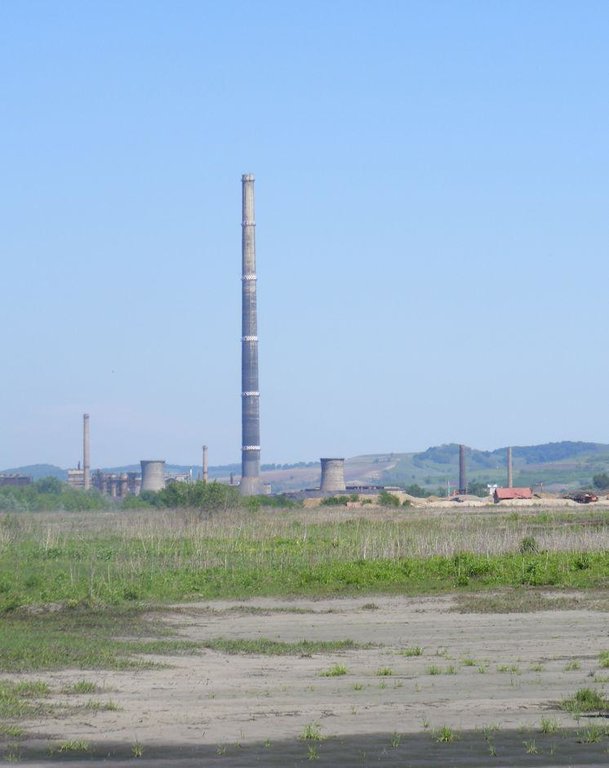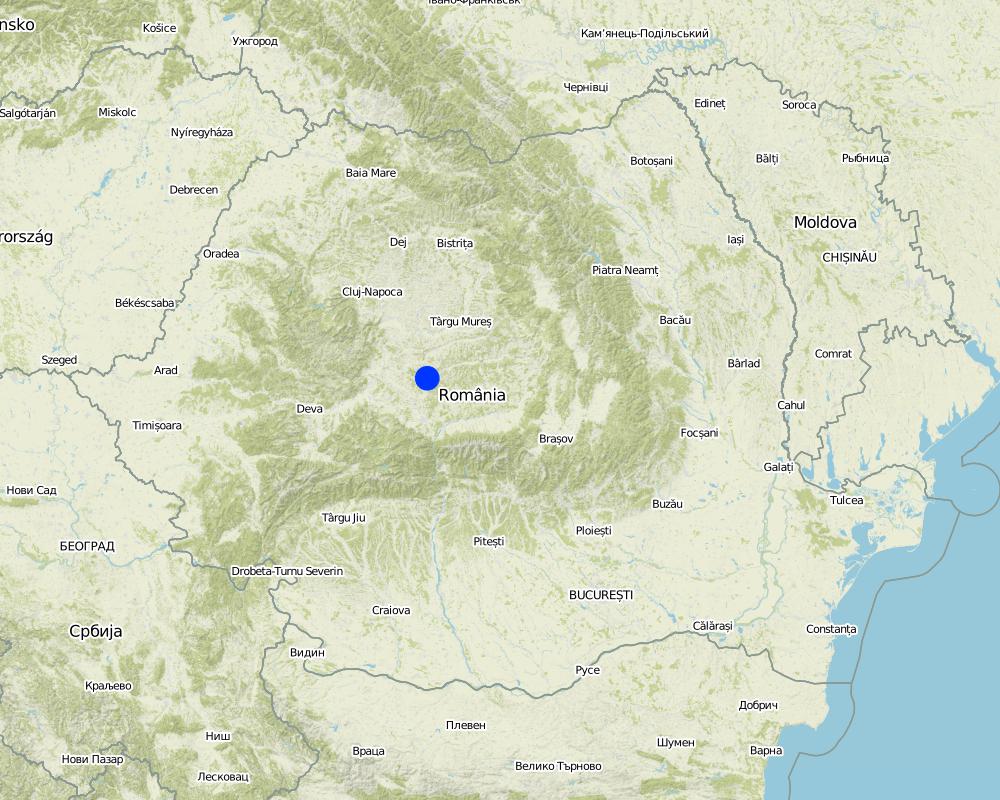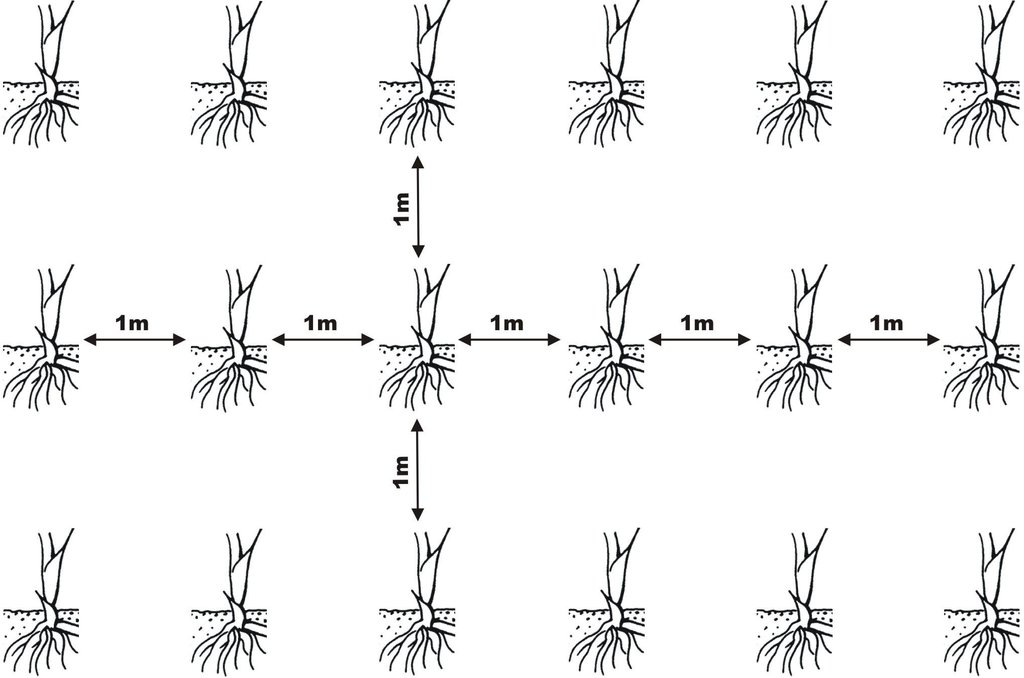Cropping perennial grasses (Miscanthus sinensis gigantheus) on soils contaminated with heavy metals [ប្រទេសរូម៉ានី]
- ការបង្កើត៖
- បច្ចុប្បន្នភាព
- អ្នកចងក្រង៖ Andrei Vrinceanu
- អ្នកកែសម្រួល៖ –
- អ្នកត្រួតពិនិត្យច្រើនទៀត៖ Deborah Niggli, Alexandra Gavilano
Cultivarea cu Miscanthus a solurilor poluate cu metale grele (Romanian)
technologies_1706 - ប្រទេសរូម៉ានី
ពិនិត្យមើលគ្រប់ផ្នែក
ពង្រីកមើលទាំងអស់ បង្រួមទាំងអស់1. ព័ត៌មានទូទៅ
1.2 ព័ត៌មានលម្អិតពីបុគ្គលសំខាន់ៗ និងស្ថាប័នដែលចូលរួមក្នុងការវាយតម្លៃ និងចងក្រងឯកសារនៃបច្ចេកទេស
អ្នកជំនាញឯកទេស SLM:
អ្នកជំនាញឯកទេស SLM:
Horia Barbu
Lucian Blaga University of Sibiu
ប្រទេសរូម៉ានី
ឈ្មោះអង្គភាពមួយ (ច្រើន) ដែលបានចងក្រងឯកសារ/ វាយតម្លៃបច្ចេកទេស (បើទាក់ទង)
National Research and Development Institute for So (National Research and Development Institute for So) - ប្រទេសរូម៉ានី1.3 លក្ខខណ្ឌទាក់ទងទៅនឹងការប្រើប្រាស់ទិន្នន័យដែលបានចងក្រងតាមរយៈ វ៉ូខេត
អ្នកចងក្រង និង(បុគ្គលសំខាន់ៗ)យល់ព្រមទទួលយកនូវលក្ខខណ្ឌនានាទាក់ទងទៅនឹងការប្រើប្រាស់ទិន្នន័យដែលបានចងក្រងតាមរយៈវ៉ូខេត:
បាទ/ចា៎
1.4 សេចក្តីប្រកាសស្តីពីចីរភាពនៃការពណ៌នាពីបច្ចេកទេស
តើបច្ចេកទេសដែលបានពណ៌នានេះមានបញ្ហាដែលផ្តោតលើការធ្លាក់ចុះគុណភាពដី, បើដូច្នេះវាមិនអាចត្រូវបានប្រកាសថាជាបច្ចេកទេសនៃការគ្រប់គ្រងប្រកបដោយចីរភាពទេ?
ទេ
2. ការពណ៌នាពីបច្ចេកទេស SLM
2.1 ការពណ៌នាដោយសង្ខេបពីបច្ចេកទេស
និយមន័យបច្ចេកទេស:
Miscanthus sinensis gigantheus is a perennial warm-season grass used as a commercial energy crop on soils contaminated with heavy metals.
2.2 ការពណ៌នាលម្អិតពីបច្ចេកទេស
ការពណ៌នា:
Cropping Miscanthus sinensis gigantheus mainly addresses the problem of land contamination with toxic materials namely soil pollution with heavy metals due to industrial activities. Miscanthus is a perennial warm-season grass used as a commercial energy crop. The plant is a sterile hybrid, unable to produce viable seed, vegetative propagation being by rhizomes, therefore reducing the risk to become invasive. Its special type of photosynthesis (C4) implies the return of the nutrients in the rhizomes during the cold season. As temperatures cool in the fall, the dark green foliage fades to buff and drops, leaving the stems which are the most important commercial part of Miscanthus. Regarding cropping on contaminated soils, research has shown that the amount of heavy metals uptaken by Miscanthus is extremely low, making the plant unsuitable for phytoextraction but allowing it to be used for green energy or in various other fields like pulp and paper industry, without any risk. Miscanthus sinensis gigantheus stands for an alternative crop, from which an annual income can be obtained, instead of food crops and fodder that can represent a risk for human and animal consumption in areas with soils contaminated with heavy metals.
The aim of this technology is to assure a sustainable use of polluted soils with heavy metals through cultivation of energy crops with economic value and very few risks for humans, animals and environment. Studies of Miscanthus sinensis gigantheus behaviour on contaminated soils with heavy metals showed that very small amount of Pb (Lead) and Cd (Cadmium) were detected in the upper parts of the plants. In comparison, higher amounts of heavy metals is being retained at root level in rhizomes, which in time will decrease when root system will develop deeper, in less affected soil horizons as roots can reach 2-3 m in depth. The applied technology increases overall soil quality in terms of organic matter, nutrients and structure. Miscanthus cropping enhances the nutrients cycle in the plant–soil system. As a result of the high input of leaves, rhizomes and roots, the alluvial sandy loam soils, on which Miscanthus is currently croped, can benefit of increased organic carbon amount.
The establishment phase takes place on arable land (annual cropland) which after implementation will become a permanent cropland with perennial (non-woody) cropping, as the crop has the potential to be in the ground for at least 15 years. Miscanthus cropping technique consists of the following: weeding the site in July-August by spraying herbicides for controlling perennial weeds, deep ploughing in October-November to improve subsoil structure and soil aeration possible affected by compaction or hardpan, harrowing in February-April to ensure an adequate seedbed for rhizomes and planting in March-May. Early planting is being recommended as it takes advantage of spring time soil moisture and allows an extended first season of growth. The operation can be made using a modular potato planter or specialized planter like Miscanthus ETPM4. The planting rate is 10 000 rhizomes per hectare in order to provide a good crop density required to achieve optimal yields from year three onwards and effective weed suppression through competition. Rhizomes need to be planted at a depth of 8-15 cm and at 1m x 1m wide spacing. The crop is harvested annually during February-March, typically with conventional farm machineries or specialized ones like Miscanthus CRM Harvesting Cropper. The crop needs 3 to 4 years to reach a mature yield between 15-18 t/ha. The technology requires mechanized agricultural operations and investments in specialized equipment, if necessary.
The technology is applied mainly on alluvial sandy loam soils (Fluvisols), with deep depths, on low lands with flat-gentle slops (0-5%), placed in valley floors/floodplains. The climate is temperate, semi-arid, with an average annual rainfall between 550-600 mm. The plots cropped with Miscanthus are privately owned but leased. Size of crop land where the technology is applied is usually small up to 2 ha. The farmers receive agricultural subsidies and the production system is mechanized and market oriented.
2.3 រូបភាពនៃបច្ចេកទេស
2.5 ប្រទេស/តំបន់/ទីតាំងកន្លែង ដែលបច្ចេកទេសត្រូវបានអនុវត្ត និងបានគ្រប់ដណ្តប់ដោយការវាយតម្លៃនេះ
ប្រទេស:
ប្រទេសរូម៉ានី
តំបន់/រដ្ឋ/ខេត្ត:
Romania/Transylvania
បញ្ជាក់បន្ថែមពីលក្ខណៈនៃទីតាំង:
Sibiu/Axente Sever
បញ្ជាក់ពីការសាយភាយនៃបច្ចេកទេស:
- ត្រូវបានផ្សព្វផ្សាយត្រឹមតំបន់មួយ
ប្រសិនបើបច្ចេកទេសត្រូវបានសាយភាយពាសពេញតំបន់ណាមួយ បញ្ជាក់ទំហំផ្ទៃដីអនុវត្តន៍ (គិតជា គ.ម2):
0,14
ប្រសិនបើមិនច្បាស់ពីទំហំផ្ទៃដី សូមធ្វើការប៉ាន់ប្រម៉ាណ:
- 0.1-1 គម2
មតិយោបល់:
Total area covered by the SLM Technology is 0.14 km2.
Map
×2.6 កាលបរិច្ឆេទនៃការអនុវត្ត
ប្រសិនបើមិនច្បាស់ឆ្នាំ សូមបញ្ជាក់កាលបរិច្ឆេទដែលប្រហាក់ប្រហែល:
- តិចជាង 10ឆ្នាំមុន (ថ្មី)
2.7 ការណែនាំពីបច្ចេកទេស
សូមបញ្ជាក់តើបច្ចេកទេសត្រូវបានណែនាំឱ្យអនុវត្តដោយរបៀបណា:
- តាមរយៈគម្រោង / អន្តរាគមន៍ពីខាងក្រៅ
មតិយោបល់ (ប្រភេទនៃគម្រោង ។ល។):
from 2008
3. ចំណាត់ថ្នាក់នៃបច្ចេកទេស SLM
3.2 ប្រភេទដីប្រើប្រាស់មួយប្រភេទ (ច្រើនប្រភេទ) ដែលបានអនុវត្តបច្ចេកទេស

ដីដាំដំណាំ
- ដំណាំរយៈពេលវែង (មិនមែនឈើ)
- grass (Miscanthus sinensis gigantheus)
ចំនួនសារដែលដាំដំណាំក្នុងមួយឆ្នាំ:
- 1
សូមបញ្ជាក់:
Longest growing period in days: 240Longest growing period from month to month: April until October
មតិយោបល់:
Major land use problems (compiler’s opinion): Soil contamination with heavy metals (Pb, Cd, Zn).
Major land use problems (land users’ perception): Soil contamination with heavy metals (Pb, Cd, Zn).
3.3 បន្ទាប់ពីអនុវត្តបច្ចេកទេស តើដីប្រើប្រាស់មានការប្រែប្រួលដែររឺទេ?
បន្ទាប់ពីអនុវត្តបច្ចេកទេស តើដីប្រើប្រាស់មានការប្រែប្រួលដែររឺទេ?
- បាទ/ច៎ា (សូមបំពេញសំណួរខាងក្រោមពីស្ថានភាពដីប្រើប្រាស់មុនពេលអនុវត្តបច្ចេកទេស)

ដីដាំដំណាំ
- ដំណាំប្រចាំឆ្នាំ
3.4 ការផ្គត់ផ្គង់ទឹក
ការផ្គត់ផ្គង់ទឹកនៅកន្លែងអនុវត្តបច្ចេកទេស:
- ទឹកភ្លៀង
3.5 ក្រុម SLM ដែលបច្ចេកទេសស្ថិតនៅក្នុង
- ធ្វើឱ្យប្រសើរឡើងគម្របដី/ ដំណាំគម្របដី
- ការគ្រប់គ្រងជីជាតិដីតាមបែបចម្រុះ
3.6 វិធានការ SLM ដែលបញ្ចូលនូវបច្ចេកទេស

វិធានការរុក្ខជាតិ
- V2: ស្មៅនិងរុក្ខជាតិៗដែលដុះមានអាយុមិនលើសពី 2ឆ្នាំ

វិធានការគ្រប់គ្រង
- M2: ការផ្លាស់ប្តូរការគ្រប់គ្រង/ កម្រិតអាំងតង់ស៊ីតេ
- M4: ការផ្លាស់ប្តូរចម្បងៗក្នុងការកំណត់ ពេលអនុវត្តសកម្មភាព
មតិយោបល់:
Main measures: vegetative measures
Secondary measures: management measures
Type of vegetative measures: aligned: -linear
3.7 កំណត់ប្រភេទនៃការធ្លាក់ចុះគុណភាពដីសំខាន់ៗដែលបច្ចេកទេសនេះបានដោះស្រាយ

ការហូរច្រោះដីដោយសារទឹក
- Wt: ការបាត់ដីស្រទាប់លើដោយការហូរច្រោះ

ការបាត់ដីដោយសារខ្យល់
- Ed: អតិផរណា និង ការទម្លាក់

ការធ្លាក់ចុះសារធាតុគីមីក្នុងដី
- Cp: ការបំពុលដី
មតិយោបល់:
Main causes of degradation: release of airborne pollutants (urban/industry…) (Heavy metals contamination (Pb, Cd, Zn))
Secondary causes of degradation: governance / institutional (Non-ferrous industry was a strategic activity in communist period with high mass production on the expense of environmental investments (e.g. filters).)
3.8 ការពារ កាត់បន្ថយ ឬស្តារឡើងវិញនៃការធ្លាក់ចុះគុណភាពដី
បញ្ជាក់ពីគោលដៅរបស់បច្ចេកទេស ដែលផ្តោតទៅការធ្លាក់ចុះគុណភាពដី:
- ការកាត់បន្ថយការធ្លាក់ចុះគុណភាពដី
4. បច្ចេកទេសជាក់លាក់ សកម្មភាពអនុវត្ត ធាតុចូល និងថ្លៃដើម
4.1 គំនូសបច្ចេកទេសនៃបច្ចេកទេសនេះ
លក្ខណៈពិសេសនៃបច្ចេកទេស (ទាក់ទងនឺងគំនូរបច្ចេកទេស):
Schematic diagram indicating the spatial distribution of Mischantus rhizomes (1 m between plants) - part of the planting technology
Technical knowledge required for land users: moderate
Main technical functions: increase of biomass (quantity), retain heavy metals at roots level
Secondary technical functions: improvement of ground cover, improvement of surface structure (crusting, sealing), improvement of topsoil structure (compaction), improvement of subsoil structure (hardpan), increase in organic matter, reduction in wind speed
Aligned: -linear
Vegetative material: C : perennial crops
Number of plants per (ha): 10000
Vertical interval between rows / strips / blocks (m): 1
Spacing between rows / strips / blocks (m): 1
Vertical interval within rows / strips / blocks (m): 1
Width within rows / strips / blocks (m): 1
Perennial crops species: Miscanthus sinensis gigantheus
Change of land use practices / intensity level: from rotational cropping to mono-cropping
Major change in timing of activities: from land preparation and planting in the first year to only harvesting from year 3 to 15
ឈ្មោះអ្នកនិពន្ធ:
Petru Ignat, INCDPAPM-ICPA Bucharest
4.2 ព័ត៌មានទូទៅដែលពាក់ព័ន្ធនឹងការគណនាធាតុចូល និងថ្លៃដើម
ផ្សេងៗ/ រូបិយប័ណ្ណជាតិ (បញ្ជាក់):
Lei
បើពាក់ព័ន្ធសូមកំណត់អត្រាប្តូរប្រាក់ពីដុល្លាទៅរូបិយប័ណ្ណតំបន់ (ឧ. 1 ដុល្លារ = 79.9 រៀលនៃរូបិយប័ណ្ណប្រេស៊ីល) ៖ 1 ដុល្លារ =:
4,0
កំណត់ថ្លៃឈ្នួលជាមធ្យមនៃការជួលកម្លាំងពលកម្មក្នុងមួយថ្ងៃ:
12.00
4.3 សកម្មភាពបង្កើត
| សកម្មភាព | រយៈពេល (រដូវកាល) | |
|---|---|---|
| 1. | Treatment with herbicides | month VII -VIII |
| 2. | Deep ploughing | month X-XI |
| 3. | Soil preparation by harrowing | month II-IV |
| 4. | Planting | month III-V |
4.4 ថ្លៃដើម និងធាតុចូលដែលត្រូវការសម្រាប់ការបង្កើតបច្ចេកទេស
| បញ្ជាក់ពីធាតុចូល | ឯកតា | បរិមាណ | ថ្លៃដើមក្នុងមួយឯកតា | ថ្លៃធាតុចូលសរុប | % នៃថ្លៃដើមដែលចំណាយដោយអ្នកប្រើប្រាស់ដី | |
|---|---|---|---|---|---|---|
| កម្លាំងពលកម្ម | ha | 1,0 | 102,0 | 102,0 | 93,0 | |
| សម្ភារៈ | machine use | ha | 1,0 | 237,0 | 237,0 | 93,0 |
| សម្ភារៈដាំដុះ | seeds | ha | 1,0 | 2180,0 | 2180,0 | 93,0 |
| សម្ភារៈដាំដុះ | biocides | ha | 1,0 | 62,0 | 62,0 | 93,0 |
| ថ្លៃដើមសរុបក្នុងការបង្កើតបច្ចេកទេស | 2581,0 | |||||
| ថ្លៃដើមសរុបក្នុងការបង្កើតបច្ចេកទេសគិតជាដុល្លារ | 645,25 | |||||
មតិយោបល់:
Duration of establishment phase: 9 month(s)
4.5 សកម្មភាពថែទាំ
| សកម្មភាព | ពេលវេលា/ ភាពញឹកញាប់ | |
|---|---|---|
| 1. | Harvest | month II-III |
| 2. | Harvest | month II-III |
4.6 កំណត់ថ្លៃដើមសម្រាប់ការថែទាំ/ សកម្មភាពរបស់បច្ចេកទេស (ក្នុងរយៈពេលមួយឆ្នាំ)
| បញ្ជាក់ពីធាតុចូល | ឯកតា | បរិមាណ | ថ្លៃដើមក្នុងមួយឯកតា | ថ្លៃធាតុចូលសរុប | % នៃថ្លៃដើមដែលចំណាយដោយអ្នកប្រើប្រាស់ដី | |
|---|---|---|---|---|---|---|
| កម្លាំងពលកម្ម | ha | 1,0 | 25,0 | 25,0 | ||
| សម្ភារៈ | machine use | ha | 1,0 | 124,0 | 124,0 | |
| ថ្លៃដើមសរុបសម្រាប់ការថែទាំដំណាំតាមបច្ចេកទេស | 149,0 | |||||
| ថ្លៃដើមសរុបសម្រាប់ការថែទាំដំណាំតាមបច្ចេកទេសគិតជាដុល្លារ | 37,25 | |||||
មតិយោបល់:
Machinery/ tools: MISCANTHUS ETPM4 Planter; MISCANTHUS CRM HARVESTING Cropper; Deep Reversible Plough; Disc Harrows; Sprayers machime; Tractor, MISCANTHUS ETPM4 Planter; MISCANTHUS CRM HARVESTING Cropper; Deep Reversible Plough; Disc Harrows; Sprayers machime; Tractor
The costs are indicated per ha of land where the technology is implemented. The establishment costs are high but after this in the next 15 years the crop requires only harvesting. As part of the National Rural Development Programme, energy crops receive a subsidy of 173 US $ per ha. Prices are for spring 2015.
4.7 កត្តាសំខាន់បំផុតដែលមានឥទ្ធិពលដល់ការចំណាយ
ពណ៌នាពីកត្តាប៉ះពាល់ចម្បងៗទៅលើថ្លៃដើម:
The price of rhizomes (seeds) per hectare and harvesting activity involving special machines that cut and chop stems are the most determinate factors affecting the costs.
5. លក្ខណៈបរិស្ថានធម្មជាតិ និងមនុស្ស
5.1 អាកាសធាតុ
បរិមាណទឹកភ្លៀងប្រចាំឆ្នាំ
- < 250 មម
- 251-500 មម
- 501-750 មម
- 751-1,000 មម
- 1,001-1,500 មម
- 1,501-2,000 មម
- 2,001-3,000 មម
- 3,001-4,000 មម
- > 4,000 មម
លក្ខណៈពិសេស/ មតិយោបល់លើរដូវភ្លៀង:
573 mm/year; May and June register the highest amount of rainfall during the year: 85-100 mm
តំបន់កសិអាកាសធាតុ
- មានភ្លៀងតិចតួច
Thermal climate class: temperate
5.2 សណ្ឋានដី
ជម្រាលជាមធ្យម:
- រាបស្មើ (0-2%)
- ជម្រាលតិចតួច (3-5%)
- មធ្យម (6-10%)
- ជម្រាលខ្ពស់បន្តិច (11-15%)
- ទីទួល (16-30%)
- ទីទួលចោត (31-60%)
- ទីទួលចោតខ្លាំង (>60%)
ទម្រង់ដី:
- ខ្ពង់រាប
- កំពូលភ្នំ
- ជម្រាលភ្នំ
- ជម្រាលទួល
- ជម្រាលជើងភ្នំ
- បាតជ្រលងភ្នំ
តំបន់តាមរយៈកម្ពស់ :
- 0-100 ម
- 101-500 ម
- 501-1,000 ម
- 1,001-1,500 ម
- 1,501-2,000 ម
- 2,001-2,500 ម
- 2,501-3,000 ម
- 3,001-4,000 ម
- > 4,000 ម
5.3 ដី
ជម្រៅដីជាមធ្យម:
- រាក់ខ្លាំង (0-20 សម)
- រាក់ (21-50 សម)
- មធ្យម (51-80 សម)
- ជ្រៅ (81-120 សម)
- ជ្រៅខ្លាំង (> 120 សម)
វាយនភាពដី (ស្រទាប់លើ):
- គ្រើម/ មានពន្លឺ (ខ្សាច់)
- មធ្យម (ល្បាយ, ល្បាប់)
សារធាតុសរីរាង្គនៅស្រទាប់ដីខាងលើ:
- មធ្យម (1-3%)
5.4 ទឹកដែលអាចទាញមកប្រើប្រាស់បាន និងគុណភាពទឹក
នីវ៉ូទឹកក្រោមដី:
< 5 ម
ទឹកលើដីដែលអាចទាញយកប្រើប្រាស់បាន:
ល្អ
គុណភាពទឹក (មិនបានធ្វើប្រត្តិកម្ម):
ទឹកពិសារដែលគ្មានគុណភាព (តម្រូវឱ្យមានការសំអាត)
5.5 ជីវៈចម្រុះ
ភាពសម្បូរបែបនៃប្រភេទ:
- កម្រិតមធ្យម
5.6 លក្ខណៈនៃអ្នកប្រើប្រាស់ដីដែលអនុវត្តបច្ចេកទេស
ទីផ្សារនៃប្រព័ន្ធផលិតកម្ម:
- ពាណិជ្ជកម្ម/ ទីផ្សារ
ចំណូលក្រៅកសិកម្ម:
- 10-50% នៃចំណូល
កម្រិតជីវភាព:
- មធ្យម
ឯកជន ឬក្រុម:
- ធ្វើខ្លួនឯង/ គ្រួសារ
កម្រិតប្រើប្រាស់គ្រឿងយន្ត:
- ប្រើកម្លាំងពលកម្ម
- គ្រឿងយន្ត/ ម៉ាស៊ីន
យេនឌ័រ:
- បុរស
សូមបញ្ជាក់ពីលក្ខណៈពាក់ព័ន្ធផ្សេងទៀតអំពីអ្នកប្រើប្រាស់ដី:
Land users applying the Technology are mainly common / average land users
Population density: 10-50 persons/km2
Annual population growth: 0.5% - 1%
100% of the land users are average wealthy and own 75% of the land.
and own 25% of the land.
5.7 ទំហំផ្ទៃដីជាមធ្យមនៃដីប្រើប្រាស់ដោយអ្នកប្រើប្រាស់ដី ក្នុងការអនុវត្តបច្ចេកទេស
- < 0.5 ហិកតា
- 0.5-1 ហិកតា
- 1-2 ហិកតា
- 2-5 ហិកតា
- 5-15 ហិកតា
- 15-50 ហិកតា
- 50-100 ហិកតា
- 100-500 ហិកតា
- 500-1,000 ហិកតា
- 1,000-10,000 ហិកតា
- > 10,000 ហិកតា
តើផ្ទៃដីនេះចាត់ទុកជាទំហំកម្រិតណាដែរ ខ្នាតតូច មធ្យម ឬខ្នាតធំ (ធៀបនឹងបរិបទតំបន់)?
- ខ្នាតតូច
5.8 ភាពជាម្ចាស់ដី កម្មសិទ្ធប្រើប្រាស់ដី និងកម្មសិទ្ធប្រើប្រាស់ទឹក
ភាពជាម្ចាស់ដី:
- ឯកជន មិនមានកម្មសិទ្ធ
កម្មសិទ្ធិប្រើប្រាស់ដី:
- កិច្ចសន្យាជួល
5.9 ការប្រើប្រាស់សេវាកម្ម និងហេដ្ឋារចនាសម្ព័ន្ធ
សុខភាព:
- មិនល្អ
- មធ្យម
- ល្អ
ការអប់រំ:
- មិនល្អ
- មធ្យម
- ល្អ
ជំនួយបច្ចេកទេស:
- មិនល្អ
- មធ្យម
- ល្អ
ការងារ (ឧ. ការងារក្រៅកសិដ្ឋាន):
- មិនល្អ
- មធ្យម
- ល្អ
ទីផ្សារ:
- មិនល្អ
- មធ្យម
- ល្អ
ថាមពល:
- មិនល្អ
- មធ្យម
- ល្អ
ផ្លូវ និងការដឹកជញ្ជូន:
- មិនល្អ
- មធ្យម
- ល្អ
ទឹកផឹក និងអនាម័យ:
- មិនល្អ
- មធ្យម
- ល្អ
សេវាកម្មហិរញ្ញវត្ថុ:
- មិនល្អ
- មធ្យម
- ល្អ
6. ផលប៉ះពាល់ និងការសន្និដ្ឋាន
6.1 ផលប៉ះពាល់ក្នុងបរិវេណអនុវត្តបច្ចេកទេសដែលកើតមាន
ផលប៉ះពាល់លើសេដ្ឋកិច្ចសង្គម
ផលិតផល
ការគ្រប់គ្រងដី
ការបង្កើតថាមពល
មតិយោបល់/ ការបញ្ជាក់:
Miscanthus is an energy crop cultivated for generation of heat and biofuels
ចំណូល និងថ្លៃដើម
ការចំណាយលើធាតុចូលកសិកម្ម
មតិយោបល់/ ការបញ្ជាក់:
Usually from year two no agricultural inputs (fertilizers and pesticides) are required. In case of establishment losses, additional planting is needed to achieve the plant density for optimal yields.
ចំណូលក្នុងកសិដ្ឋាន
ភាពសម្បូរបែបប្រភពប្រាក់ចំណូល
ផលប៉ះពាល់ទៅលើសេដ្ឋកិច្ចសង្គមផ្សេងៗ
farm energy independence
ផលប៉ះពាល់ទៅលើវប្បធម៌សង្គម
សន្តិសុខស្បៀង/ ភាពគ្រប់គ្រាន់ខ្លួនឯង
ការកាត់បន្ថយជម្លោះ
ផលប៉ះពាល់ទៅលើអេកូឡូស៊ី
វដ្តទឹក/លំហូរ
លំហូរទឹកលើផ្ទៃដី
រំហួត
ដី
សំណើមដី
គម្របដី
ដីប្រេះ
ដីហាប់
វដ្តនៃសារធាតុចិញ្ចឹម/ការទទួលបាន
សារធាតុសរីរាង្គដី/ការបូនក្រោមដី
ជីវចម្រុះ៖ ដំណាំ, សត្វ
ជីវម៉ាស/ កាបូនលើដី
ភាពសម្បូរបែបនៃសត្វ
ភាពសម្បូរបែបនៃទីជំរក
ការកាត់បន្ថយហានិភ័យនៃគ្រោះមហន្តរាយ និងគ្រោះអាកាសធាតុ
ការបំភាយនៃកាបូន និងឧស្ម័នផ្ទះកញ្ចក់
ហានិភ័យនៃភ្លើងឆេះព្រៃ
ល្បឿនខ្យល់
6.2 ផលប៉ះពាល់ក្រៅបរិវេណអនុវត្តបច្ចេកទេសដែលកើតមាន
ខ្យល់នាំយកនូវធូរលី
6.3 ភាពប្រឈម និងភាពរួសនៃបច្ចេកទេសទៅនឹងការប្រែប្រួលអាកាសធាតុ និងគ្រោះអាកាសធាតុ/ គ្រោះមហន្តរាយ (ដែលដឹងដោយអ្នកប្រើប្រាស់ដី)
ការប្រែប្រួលអាកាសធាតុ
ការប្រែប្រួលអាកាសធាតុ
| រដូវកាល | កើនឡើង ឬថយចុះ | លក្ខណៈឆ្លើយតបនៃបច្ចេកទេសទៅនឹងការប្រែប្រួលអាកាសធាតុ | |
|---|---|---|---|
| សីតុណ្ហភាពប្រចាំឆ្នាំ | កើនឡើង | ល្អ |
គ្រោះអាកាសធាតុ (មហន្តរាយ)
គ្រោះមហន្តរាយធម្មជាតិ
| លក្ខណៈឆ្លើយតបនៃបច្ចេកទេសទៅនឹងការប្រែប្រួលអាកាសធាតុ | |
|---|---|
| ព្យុះភ្លៀងតាមតំបន់ | ល្អ |
| ព្យុះកំបុតត្បូងតាមតំបន់ | ល្អ |
គ្រោះមហន្តរាយអាកាសធាតុ
| លក្ខណៈឆ្លើយតបនៃបច្ចេកទេសទៅនឹងការប្រែប្រួលអាកាសធាតុ | |
|---|---|
| រាំងស្ងួត | មិនល្អ |
គ្រោះមហន្តរាយទឹក
| លក្ខណៈឆ្លើយតបនៃបច្ចេកទេសទៅនឹងការប្រែប្រួលអាកាសធាតុ | |
|---|---|
| ទឹកជំនន់ទូទៅ (ទន្លេ) | ល្អ |
ផលវិបាកដែលទាក់ទងនឹងបរិយាកាសផ្សេងៗទៀត
ផលវិបាកដែលទាក់ទងនឹងបរិយាកាសផ្សេងៗទៀត
| លក្ខណៈឆ្លើយតបនៃបច្ចេកទេសទៅនឹងការប្រែប្រួលអាកាសធាតុ | |
|---|---|
| កាត់បន្ថយពេលដាំដុះ | មិនស្គាល់ |
6.4 ការវិភាគថ្លៃដើម និងអត្ថប្រយោជន៍
តើផលចំណេញ និងថ្លៃដើមត្រូវបានប្រៀបធៀបគ្នាយ៉ាងដូចម្តេច (ទស្សនៈរបស់អ្នកប្រើប្រាស់ដី)?
រយៈពេលខ្លី:
អវិជ្ជមាន
រយៈពេលវែង:
វិជ្ជមាន
តើផលចំណេញ និងការថែទាំ/ ជួសជុលត្រូវបានប្រៀបធៀបគ្នាយ៉ាងដូចម្តេច (ទស្សនៈរបស់អ្នកប្រើប្រាស់ដី)?
រយៈពេលខ្លី:
ប៉ះពាល់តិចតួចបំផុត
រយៈពេលវែង:
វិជ្ជមានខ្លាំង
6.5 ការទទួលយកបច្ចេកទេស
- > 50%
បើអាច សូមបញ្ជាក់ពីបរិមាណ (ចំនួនគ្រួសារ និង/ ឬតំបន់គ្របដណ្តប់):
1 land user family
មតិយោបល់:
The farmers receive subsidies provided for energy crops.
There is no trend towards (growing) spontaneous adoption of the technology. The establishment costs are considered high.
6.7 ភាពខ្លាំង/ គុណសម្បត្តិ/ ឱកាសនៃបច្ចេកទេស
| ភាពខ្លាំង/ គុណសម្បត្តិ/ ឱកាសនៅកន្លែងរបស់អ្នកប្រើប្រាស់ដី |
|---|
| High economic value of the crop |
| Simple agricultural technique |
| Low-cost of maintenance / recurrent activities |
| ភាពខ្លាំង/ គុណសម្បត្តិ/ ឱកាស ទស្សនៈរបស់បុគ្គលសំខាន់ៗ |
|---|
| This technology allows a sustainable land use of contaminated soils with heavy metals with minimum risk for humans, animals and environment |
| It is very effective for biomass production with multiple uses: biofuel, animal bedding or cellulose production |
| Miscanthus sinensis gigantheus is a phytoexcluder with low heavy metal uptake from contaminated soils |
6.8 ភាពខ្សោយ/ គុណវិបត្តិ/ ហានិភ័យនៃបច្ចេកទេស និងវិធីសាស្ត្រដោះស្រាយ
| ភាពខ្សោយ/ គុណវិបត្តិ/ ហានិភ័យ ទស្សនៈរបស់អ្នកប្រើប្រាស់ដី | តើបច្ចេកទេសទាំងនោះបានដោះស្រាយបញ្ហាដូចម្តេច? |
|---|---|
| High costs for initial establishment. The cost of rhizomes (seeds) represents 85% of total initial investment costs | Initial costs could be reduced if a proportion of the crop is used as a “mother crop” for the production of rhizome cuttings |
| High costs for purchasing special machines for harvesting activity | Subsidizing |
| Undeveloped energy crop market | Support for creating local or regional markets for energy crops |
| ភាពខ្សោយ/ គុណវិបត្តិ/ ហានិភ័យ ទស្សនៈរបស់អ្នកចងក្រងឬបុគ្គលសំខាន់ៗ | តើបច្ចេកទេសទាំងនោះបានដោះស្រាយបញ្ហាដូចម្តេច? |
|---|---|
| Low suitability on lands without phreatic input | Selecting sites with good groundwater availability |
| Relatively long period (three to four years) for achieving a mature yield | Maintaining the energy crop subsidies |
7. ឯកសារយោង និងវេបសាយ
7.1 វិធីសាស្ត្រ/ ប្រភពនៃព័ត៌មាន
- ការសម្ភាសន៍ជាមួយអ្នកប្រើប្រាស់ដី
តើពេលណាដែលទិន្នន័យបានចងក្រង (នៅទីវាល)?
18/05/2015
7.2 ឯកសារយោងដែលបានចេញផ្សាយ
ចំណងជើង អ្នកនិពន្ធ ឆ្នាំ ISBN:
Barbu, C.H., Pavel, P.B., Sand, C.; Pop, M.R., 2013. Reduced uptake of Cd and Pb by Miscanthus sinensis x giganteus cultivated on polluted soil and its use as biofuel, Environmental Engineering & Management Journal (EEMJ), Vol. 12 Issue 2, pp: 233-236
ចំណងជើង អ្នកនិពន្ធ ឆ្នាំ ISBN:
Barbu, C.H., Pavel, P.B., Sand, C.; Pop, M.R., 2009. Miscanthus sinensis gigantheus’ behavior on soils polluted with heavy metals, Metal Elements in Environment, Medicine and Biology, Tome IX, Cluj University Press, pp: 21-24
ការតភ្ជាប់ និងម៉ូឌុល
ពង្រីកមើលទាំងអស់ បង្រួមទាំងអស់ការតភ្ជាប់
គ្មានការតភ្ជាប់
ម៉ូឌុល
គ្មានម៉ូឌុល






